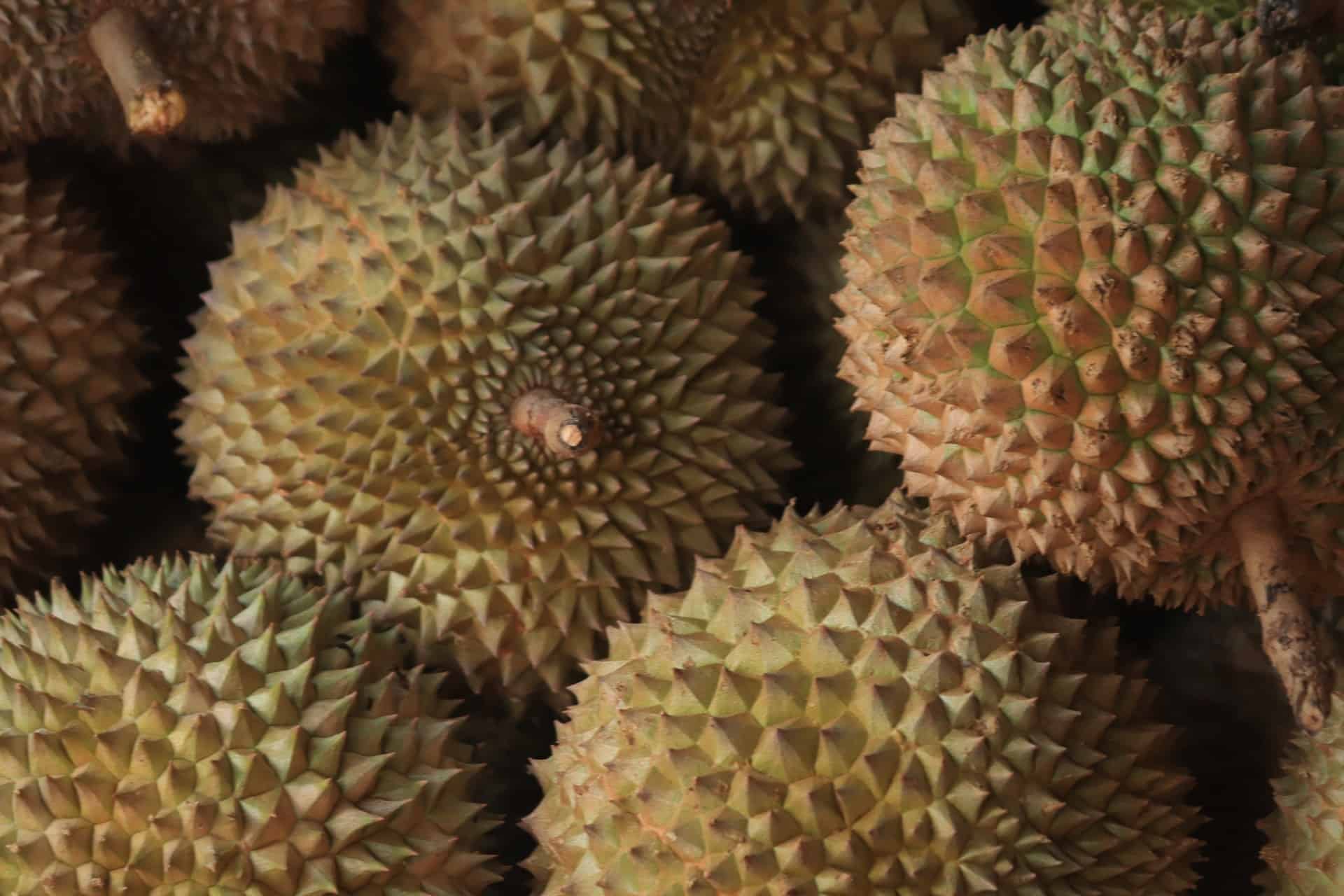When tropical gardeners gather to talk shop, the topic of durian fruit frequently comes around. Costa Rica is home to dozens of unusual, exotic fruits, but nothing compares with the durian. This is a fruit that folks either love or hate. Like Limburger cheese, if your nostrils can’t get by the odor, chances are you won’t eat it.
The durian (Durio zibethinus) is an exotic fruit tree from Southeast Asia. The fruit can grow up to 40 centimeters long and 30 cm in diameter, and typically weighs one to five kilograms. The shape of the fruit ranges from oblong to round, and the color of its husk is green to brown. Its flesh is pale-yellow to red, depending on the species, and the hard outer husk is covered with sharp, prickly thorns.
The edible portion of the fruit is the custard – like flesh around the seeds. This flesh emits a strong, distinctive odor. Some regard it as fragrant, while others often find it overpowering or offensive. To give you an example, the penetrating odor is so strong that durians are prohibited on Singapore’s rapid transit system and in a number of hotel rooms in Southeast Asia.
Many derogatory adjectives have been used to describe the smell of durian, but, in all fairness, the closest association I had upon first sampling the fruit was that of onions. As I continued to chew, a flavor of vanilla custard emerged that was quite pleasant and lingered for some time on my taste buds without a hint of the strange odor.
One might ask, “Why would anyone want to grow these fruits?” A rare-fruit grower might just answer, “Because they exist,” much like the mountain climber who climbs the mountain because it’s there.
Another reason may be financial. Because durian fruits are scarce, they fetch a high price. Here in Costa Rica, it’s common to find the fruits selling for about $12 per kilogram. Seedling trees also bring a good price, as they can be difficult to find in nurseries here.
If you haven’t already passed on to another post in the Tico Times, here are some tips on growing durian.
Durian trees are relatively large, reaching 25-50 meters in height. The leaves are evergreen, opposite, elliptic to oblong and 10-18 cm long. The flowers are produced in three to 30 clusters together on large branches and the trunk.
Durian trees have one or two fruiting periods each year. A typical durian tree can bear fruit after four or five years. Fruits mature about three months after pollination.
Heavy and armed with sharp thorns, a ripe durian falling on a person’s head can cause serious injuries or death – which is why the durian is sometimes called the most dangerous fruit in the world.
Durian seeds must be planted soon after the fruit is eaten, or they will dry up quickly and will not sprout. For this reason, it is difficult to obtain seeds for planting, unless you can obtain a mature fruit. The seeds can be planted in large plastic nursery bags with rich, fertile soil. Keep the soil moist during germination, and then water two to three times a week.
When the seedling trees are about 30-40 cm tall, plant them in a permanent site with full sun. It’s important to note that durian trees grow only in the coastal regions of Costa Rica, up to about 500 meters above sea level. You can fertilize your trees with additions of aged compost and mineral amendments to keep them healthy and growing vigorously. During the dry season, water the trees weekly.
Author Ed Bernhardt – 06






